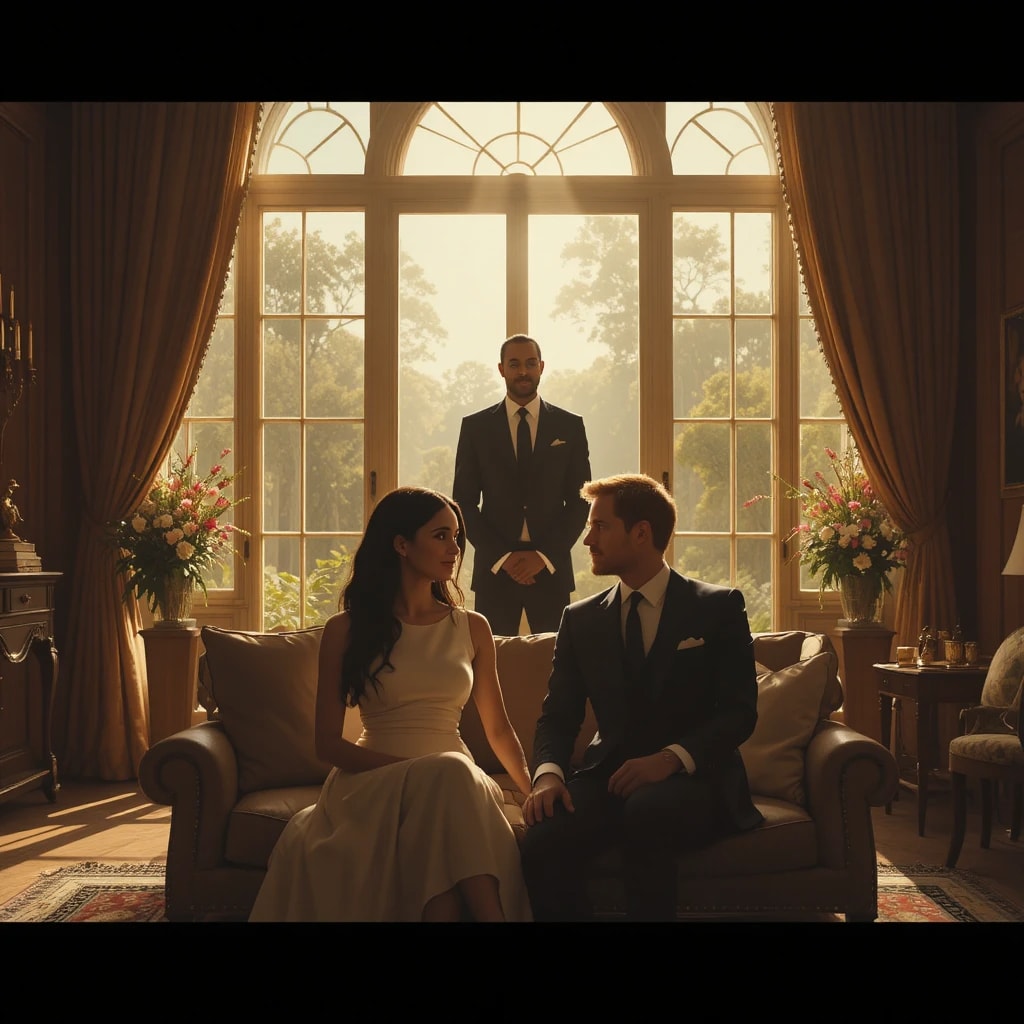When you look closely at Meghan Markle’s public image — the fashion choices, the carefully worded interviews, the emotional pauses, the camera-ready vulnerability — it’s hard to shake off the feeling that you’ve seen it all before. And you have. Decades ago, another woman walked the same path, one step at a time, without scripts or strategy. Her name was Princess Diana. But where Diana’s legacy was born from truth and time, Meghan’s version feels more like a performance — one that never found its audience.
From the very beginning, Meghan didn’t step into the royal family seeking to adapt; she entered with a blueprint. Every gesture, every headline, every sound bite seemed crafted to evoke Diana’s warmth, her struggle, her global appeal. But imitation, no matter how polished, can never recreate authenticity. Diana’s pain wasn’t designed for the spotlight — it was simply lived. Meghan’s version, however, often appeared directed.
When Diana faced heartbreak, she stayed silent until silence became unbearable. When Meghan faced criticism, she spoke before anyone even asked. The difference between the two isn’t just timing — it’s truth. Diana never sought to control how the world saw her; Meghan seemed determined to shape every frame.
This strategy might have worked in another era. But Diana’s world didn’t have social media or constant exposure. Every rare photo, every emotional interview carried weight because it was scarce. Today, overexposure breeds skepticism. When every emotion is broadcasted, the mystery that fuels empathy disappears. Meghan’s constant storytelling — on TV, in podcasts, in documentaries — left the public with no room to fill in the blanks. And when the audience has no blanks to fill, they stop imagining.
Public affection can’t be demanded; it’s earned. Diana earned it through years of quiet endurance. Her tears came after decades of service and silence. Meghan tried to fast-track that arc — from royal newcomer to global victim to independent icon — all within two years. But emotional shortcuts rarely lead to genuine connection.
Even Prince Harry, deeply shaped by his mother’s tragic story, seemed to merge his grief with Meghan’s narrative. His distrust of the media, though understandable, became fuel for their public crusade. Instead of learning from Diana’s painful history with the press, the couple repeated it — but this time, willingly. They turned their struggle into a storyline, their vulnerability into a brand.
And that’s where everything began to fracture. The public that once sympathized with their royal exit started questioning their motives. How could a couple who begged for privacy sign multimillion-dollar deals with media giants? How could they condemn the press while orchestrating their own PR spectacles? The contradictions grew too loud to ignore.
What made Diana beloved wasn’t her rebellion — it was her sincerity. She didn’t want to be a symbol; she became one because the world saw her pain unfold without filters. Meghan’s version of that pain, polished and presented, felt curated rather than lived. Even her stylistic choices — the soft blouses, the tilted head poses, the quiet hand-to-face gestures — mirrored Diana’s imagery almost frame by frame. What was once spontaneous for Diana became staged for Meghan.
And when the illusion began to crack, the reaction was swift. Public trust — the hardest currency in celebrity culture — evaporated. Meghan and Harry’s narrative of suffering lost its resonance, not because people lacked empathy, but because the storytelling began to feel transactional. Every confession came with a contract, every tear with a camera.
Meanwhile, across the royal landscape, Prince William and Princess Catherine took a different approach. They understood something Diana intuitively knew — silence is powerful. By sharing less, they controlled more. Their rare appearances carried weight because they weren’t constant. In contrast, Meghan and Harry’s saturation strategy left little to desire. When you tell your truth too often, people start to question if it’s still true.
It’s ironic. Meghan wanted to continue Diana’s legacy, but in trying so hard to become her, she lost the very essence that made Diana unforgettable — restraint, grace, and the courage to endure quietly. Diana didn’t have to remind people she was kind or compassionate. The world decided that for her. Meghan, however, seemed determined to tell us — repeatedly — and in doing so, diluted the very message she wanted to send.
In today’s world, authenticity can’t be faked. People can sense manipulation instantly. Meghan’s attempt to replicate Diana’s emotional truth became a masterclass in what happens when storytelling replaces sincerity. Instead of drawing people closer, the endless performances pushed them away.
Now, the Sussexes find themselves caught in a strange limbo — famous but not admired, visible but not trusted. They left the royal family in search of freedom, yet remain trapped in the very narrative they tried to control. The media that once crowned them symbols of resilience now treats them as cautionary tales of overexposure.
Diana once said, “Only do what your heart tells you.” For her, that meant stepping outside the royal walls to find peace. For Meghan, it seems to have meant following Diana’s steps — but not her spirit. The difference between living a legacy and copying one lies in the courage to be original, even when the world is watching.
And that may be Meghan’s ultimate confession — not one spoken, but shown through every overexposed frame. That chasing another woman’s light doesn’t make you shine; it only casts a longer shadow.
